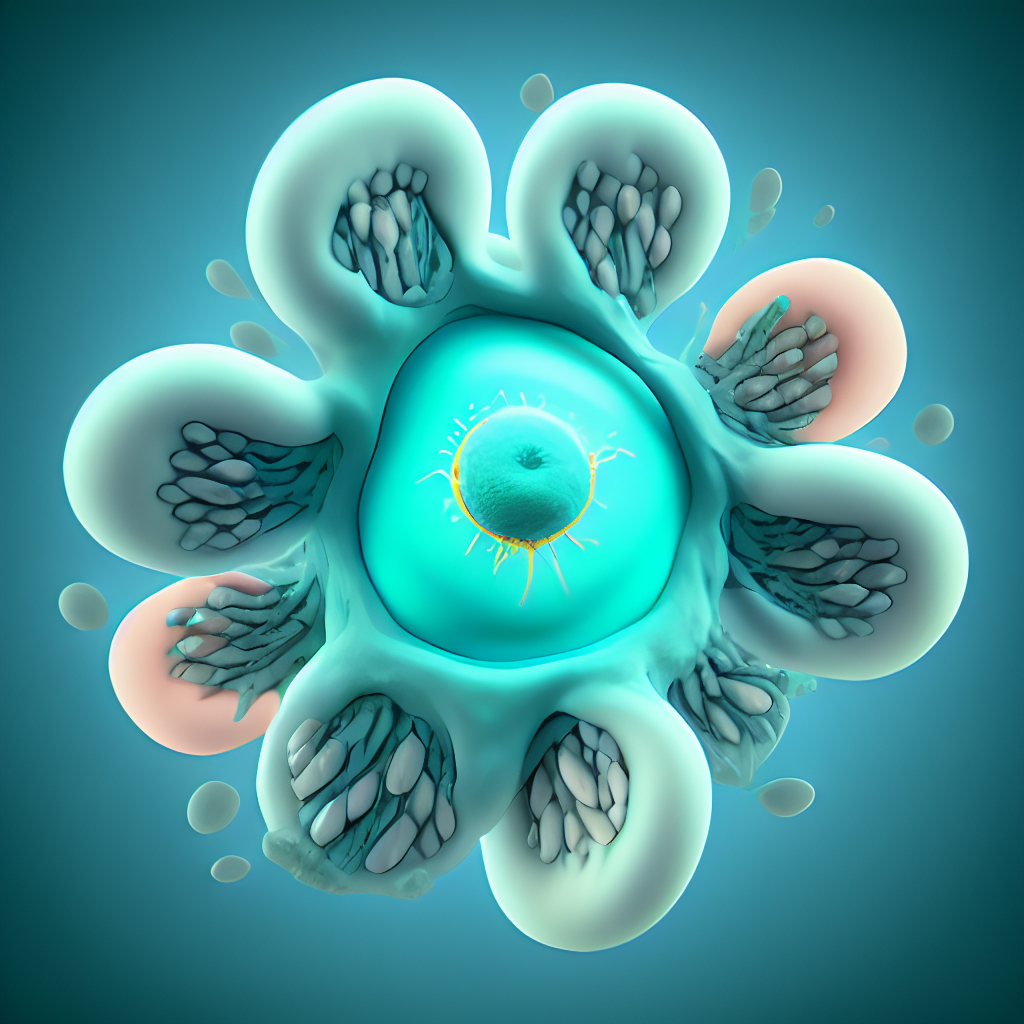What Are the Symptoms and Causes of Ovarian Cancer

Ovarian cancer often goes unnoticed because its symptoms mimic other common conditions. You might experience bloating, abdominal pain, or changes in appetite, but these signs can be easy to dismiss. Early detection plays a crucial role in improving outcomes. Unfortunately, only 19% of ovarian cancer cases are diagnosed at an early stage, as shown below:
Stage | Percentage |
|---|---|
Localized | 19% |
When caught early, survival rates are significantly higher. For example:
Women with stage 1 ovarian cancer have an 89% five-year survival rate.
At stage 2, the rate drops to 71%.
Late-stage diagnoses, such as stage 4, see survival rates as low as 20%.
Recognizing persistent symptoms and seeking medical advice promptly can make a life-saving difference.
Key Takeaways
Notice ongoing symptoms like bloating and pain in the pelvis. See a doctor if these last for weeks.
Finding ovarian cancer early helps survival chances a lot. Stage 1 has an 89% survival rate for five years.
Learn your risks, like family history or genetic changes. Think about genetic counseling if you might be at risk.
Make healthy choices, like keeping a good weight and using birth control pills, to reduce your risk.
Regular check-ups are important. Talk to your doctor about any worries for quick checks.
Symptoms of Ovarian Cancer

Common Symptoms
Abdominal bloating or swelling
You might notice persistent bloating or an increase in abdominal size. This symptom often feels like a constant fullness or tightness in your stomach. Many women report bloating as one of the earliest signs of ovarian cancer.
Pelvic or abdominal pain
Pain in the pelvic or abdominal area is another common symptom. This discomfort may feel dull or sharp and can occur frequently. Studies show that about 22% of patients with ovarian cancer experience abdominal pain.
Feeling full quickly when eating
If you feel full after eating only a small amount, it could be a sign of ovarian cancer. This symptom, known as early satiety, often accompanies bloating and abdominal discomfort.
Frequent or urgent need to urinate
You may find yourself needing to urinate more often or feeling an urgent need to go. These urinary symptoms are reported by 16% of ovarian cancer patients and can sometimes be mistaken for a urinary tract infection.
Tip: If these symptoms persist or worsen, consult your doctor promptly. Early detection can improve outcomes significantly.
Additional Symptoms
Fatigue and back pain
Fatigue and back pain are frequently reported by women with ovarian cancer. Fatigue affects about 34% of patients, while back pain is experienced by 45%. These symptoms can interfere with daily activities and should not be ignored.
Changes in bowel habits, such as constipation
Constipation or other changes in bowel habits may occur as the cancer progresses. This symptom affects approximately 24% of patients and can sometimes be mistaken for digestive issues.
Vaginal bleeding or abnormal discharge
Unusual vaginal bleeding or discharge, especially after menopause, may indicate ovarian cancer. While less common, this symptom warrants immediate medical attention.
Menstrual irregularities
For premenopausal women, irregular periods or changes in menstrual flow could signal a problem. Keep track of any changes and discuss them with your healthcare provider.
Persistent Symptoms to Watch For
Symptoms lasting more than a few weeks
Symptoms like bloating, abdominal pain, or urinary issues that persist for more than a few weeks should raise concern. Unlike temporary discomfort, these signs often indicate an underlying issue.
Symptoms that worsen over time
Pay attention to symptoms that gradually worsen. For example, bloating that becomes more severe or pain that intensifies may suggest ovarian cancer. Early intervention can make a significant difference in treatment outcomes.
Note: Many of these symptoms overlap with other conditions, but their persistence and progression set them apart.
Causes and Risk Factors of Ovarian Cancer
Genetic Factors
BRCA1 and BRCA2 gene mutations
Certain genetic mutations significantly increase your risk of ovarian cancer. BRCA1 and BRCA2 mutations are the most well-known. Women with BRCA1 mutations face a 35% to 70% lifetime risk, while BRCA2 mutations carry a 10% to 30% risk by age 70. These mutations are more common in specific populations, such as Ashkenazi Jewish women. Other genetic mutations, including STK11, MUTYH, and RAD51D, also contribute to ovarian cancer risk.
Gene Mutation | Associated Risk | Additional Information |
|---|---|---|
BRCA1 | 35% - 70% | Higher prevalence in Ashkenazi Jewish population |
BRCA2 | 10% - 30% | Risk by age 70 |
STK11 | Increased risk of ovarian cancer | Associated with Peutz-Jeghers syndrome |
MUTYH | Increased risk of ovarian cancer | Associated with MUTYH-associated polyposis |
Family history of ovarian or breast cancer
Your family history plays a critical role in assessing your risk. If multiple relatives have had ovarian or breast cancer, especially at a young age, your risk increases. This is often linked to inherited mutations like BRCA1 and BRCA2.
Tip: If you have a family history of these cancers, consider genetic counseling to assess your risk.
Hormonal and Reproductive Factors
Early menstruation or late menopause
Hormonal factors, such as starting menstruation early or reaching menopause late, can increase your risk. These conditions expose your ovaries to more ovulation cycles, which may contribute to cancer development.
Never having been pregnant
Pregnancy reduces the number of ovulation cycles in your lifetime. Women who have never been pregnant may face a higher risk of ovarian cancer compared to those who have had multiple full-term pregnancies.
Lifestyle and Environmental Factors
Smoking and obesity
Lifestyle choices also influence your risk. Smoking has been linked to certain subtypes of ovarian cancer. Obesity, particularly in women who have never used hormone replacement therapy, slightly increases the overall risk.
Higher body mass index (BMI) is associated with a greater risk of non-serous ovarian cancer subtypes.
Maintaining a healthy weight can help reduce your risk.
Use of hormone replacement therapy
Hormone replacement therapy (HRT), especially after menopause, has been identified as a risk factor. Studies show that using estrogen alone or combined with progesterone increases the likelihood of developing ovarian cancer.
Note: If you are considering HRT, discuss the risks and benefits with your doctor.
Age and Medical Conditions
Increased risk after menopause
Your risk of ovarian cancer increases as you age, especially after menopause. The median age at diagnosis is 63, highlighting the importance of monitoring symptoms as you grow older.
Median Age at Diagnosis |
|---|
63 |
After menopause, hormonal changes may contribute to the development of ovarian cancer. If you have gone through menopause, it’s essential to stay vigilant about any unusual symptoms, such as persistent bloating or pelvic pain. Regular check-ups with your doctor can help detect potential issues early.
Endometriosis and other medical conditions
Certain medical conditions, like endometriosis, significantly raise your risk of ovarian cancer. Women with endometriosis face about four times the risk compared to those without it. Severe forms, such as deep infiltrating endometriosis or ovarian endometriomas, increase the risk nearly tenfold.
Other factors that may elevate your risk include:
Being overweight or obese
Having your first child after age 35
Never having a full-term pregnancy
Taking hormone therapy after menopause
Having a family history of ovarian, breast, or colorectal cancer
Having a family cancer syndrome
If you have any of these conditions or risk factors, consider discussing preventive strategies with your healthcare provider. Early detection and proactive measures can make a significant difference in managing your health.
Differentiating Ovarian Cancer Symptoms from Other Conditions
Overlapping Symptoms
Similarities with digestive issues, such as bloating
Bloating is a common symptom of ovarian cancer, but it also occurs with digestive issues like irritable bowel syndrome (IBS) or indigestion. You might feel a persistent fullness or tightness in your abdomen, which can make it difficult to distinguish between these conditions. Unlike temporary bloating caused by diet or stress, the bloating linked to ovarian cancer tends to last longer and may worsen over time.
Symptoms resembling urinary tract infections
Frequent or urgent urination is another symptom that overlaps with urinary tract infections (UTIs). You might feel the need to urinate often or experience discomfort in your pelvic area. However, UTIs usually improve with antibiotics, while urinary symptoms caused by ovarian cancer persist despite treatment.
Tip: If you notice these symptoms lasting for weeks or not responding to standard treatments, consult your doctor for further evaluation.
Key Differences
Persistence and progression of symptoms
One key difference lies in how the symptoms behave over time. Ovarian cancer symptoms often persist and gradually worsen. For example, bloating may become more severe, or pelvic pain may intensify. In contrast, symptoms from other conditions, like digestive issues or UTIs, typically improve with appropriate treatment.
Lack of improvement with standard treatments for other conditions
If your symptoms do not improve after trying standard treatments, this could indicate a more serious issue. For instance, bloating that does not resolve with dietary changes or medications might point to ovarian cancer. Similarly, persistent urinary symptoms despite antibiotics should prompt further investigation.
Note: Paying attention to how your symptoms evolve can help you differentiate between ovarian cancer and other conditions. Early detection is crucial for better outcomes.
When to Seek Medical Advice
Recognizing Warning Signs
Persistent or worsening symptoms
Certain symptoms should prompt you to seek medical advice immediately. These include:
Persistent bloating that does not go away.
Feeling full faster than usual when eating.
Abdominal or pelvic pressure that feels unusual.
Frequent urination or waking up at night to urinate (nocturia).
These symptoms often persist and worsen over time, making early medical evaluation crucial.
Family history of ovarian or breast cancer
Your family history plays a significant role in assessing your risk. If you have relatives diagnosed with ovarian or breast cancer, especially at a young age, your risk increases. Key factors include:
Multiple relatives with these cancers.
Early diagnosis in family members (before age 50).
A combination of breast and ovarian cancer in your family.
Known genetic mutations like BRCA1 or BRCA2.
If these apply to you, consider discussing preventive measures with your doctor, such as increased screenings or genetic testing.
Importance of Regular Health Screenings
Annual gynecological exams
Regular gynecological exams are essential for monitoring your reproductive health. While the U.S. Preventive Services Task Force (USPSTF) does not recommend routine ovarian cancer screening for asymptomatic women, annual check-ups can help identify other potential issues. Women with a family history of ovarian or breast cancer should consult their doctor about personalized screening plans.
Discussing concerns with your doctor
Open communication with your doctor is vital. Share any persistent symptoms or family history of cancer. Your doctor can guide you on the next steps, including whether additional tests or preventive strategies are necessary.
Diagnostic Tools for Ovarian Cancer
Pelvic exams and imaging tests
Pelvic exams allow doctors to check for abnormalities in your ovaries and uterus. Imaging tests, such as transvaginal ultrasounds (TVUS), use sound waves to detect masses in the ovaries. However, TVUS cannot confirm if a mass is cancerous, as most detected masses are benign.
Diagnostic Tool | Description | Limitations |
|---|---|---|
Transvaginal Ultrasound (TVUS) | Uses sound waves to examine the ovaries and can detect masses. | Cannot determine if a mass is cancerous or benign; most detected masses are not cancer. |
Blood tests, including CA-125
The CA-125 blood test measures a protein often elevated in ovarian cancer patients. It helps evaluate suspicious pelvic lumps and monitor treatment effectiveness. However, it is not reliable as a standalone diagnostic tool. High CA-125 levels can result from other conditions, and not all ovarian cancer patients show elevated levels.
Tip: If imaging or blood tests reveal abnormalities, your doctor may recommend further evaluation to confirm the diagnosis.
The Importance of Early Detection of Ovarian Cancer

Improved Outcomes with Early Diagnosis
Higher survival rates in early stages
Detecting ovarian cancer early can significantly improve survival rates. When diagnosed at stage 1, the five-year survival rate is 89%. At stage 2, this rate drops to 71%. Early detection allows for more effective treatment options, increasing the likelihood of a positive outcome.
SEER Stage | |
|---|---|
Localized | 97% |
Regional | 94% |
Distant | 71% |
All Stages | 92% |
These statistics highlight the importance of recognizing symptoms early and seeking medical advice promptly.
Challenges of detecting ovarian cancer in later stages
Unfortunately, ovarian cancer often goes undetected until it has spread beyond the ovaries. Late-stage diagnoses are more common because symptoms can be vague or mistaken for other conditions. At advanced stages, treatment becomes more complex, and survival rates decrease significantly. This underscores the need for vigilance and regular health check-ups.
Preventive Strategies
Genetic testing for high-risk individuals
If you have a family history of ovarian or breast cancer, genetic testing can provide valuable insights. It helps you understand your individual risk and make informed decisions about preventive measures. Testing also benefits your family by offering guidance on their potential risks.
Informed decision-making about genetic testing and preventive actions.
Family guidance to help relatives assess their own risks.
Lifestyle changes to reduce risk factors
Certain lifestyle choices can lower your risk of ovarian cancer. Using birth control pills for five or more years reduces the risk by about 50%, even for women with BRCA mutations. Pregnancy and breastfeeding also decrease risk by reducing ovulation frequency.
Other preventive strategies include:
Oral contraceptive use: Long-term use offers lasting protection.
Pregnancy and breastfeeding: Both are linked to reduced risk.
Surgical options: Procedures like bilateral salpingectomy or salpingo-oophorectomy can significantly lower risk, especially for high-risk individuals.
By adopting these strategies, you can take proactive steps to protect your health and reduce your risk of ovarian cancer.
Ovarian cancer symptoms often appear subtle, but ignoring them can delay diagnosis. Persistent or worsening signs, such as bloating or pelvic pain, should prompt you to seek medical advice. Understanding the causes and risk factors empowers you to take proactive steps, like adopting healthier habits or discussing genetic testing with your doctor. Public awareness plays a vital role in early detection. It helps individuals recognize symptoms, seek timely care, and support advancements in research. Early diagnosis significantly improves survival rates, making vigilance essential for better outcomes.
FAQ
What are the early warning signs of ovarian cancer?
Early signs include persistent bloating, pelvic pain, feeling full quickly, and frequent urination. These symptoms often last for weeks and worsen over time.
Tip: If you notice these symptoms, consult your doctor promptly. Early detection improves treatment outcomes.
Can ovarian cancer be prevented?
While you cannot completely prevent ovarian cancer, you can reduce your risk. Using birth control pills, maintaining a healthy weight, and considering genetic testing if you have a family history are effective strategies.
Who is at the highest risk for ovarian cancer?
Women with BRCA1 or BRCA2 gene mutations, a family history of ovarian or breast cancer, or conditions like endometriosis face the highest risk. Age also plays a role, with most cases occurring after menopause.
How is ovarian cancer diagnosed?
Doctors use pelvic exams, imaging tests like ultrasounds, and blood tests such as CA-125 to diagnose ovarian cancer. These tools help identify abnormalities but may require further testing for confirmation.
Does ovarian cancer always cause symptoms?
No, ovarian cancer can develop without noticeable symptoms, especially in its early stages. This makes regular health check-ups and awareness of risk factors crucial for early detection.
Note: Stay vigilant about changes in your body and discuss concerns with your doctor.
See Also
Understanding Colon Cancer: Symptoms and Underlying Causes
Exploring Fallopian Tube Cancer: Symptoms and Causes Explained
Breast Cancer: Key Symptoms and Causes You Should Know
Gallbladder Cancer: Recognizing Symptoms and Their Causes
Bladder Cancer: Identifying Symptoms and Understanding Causes
